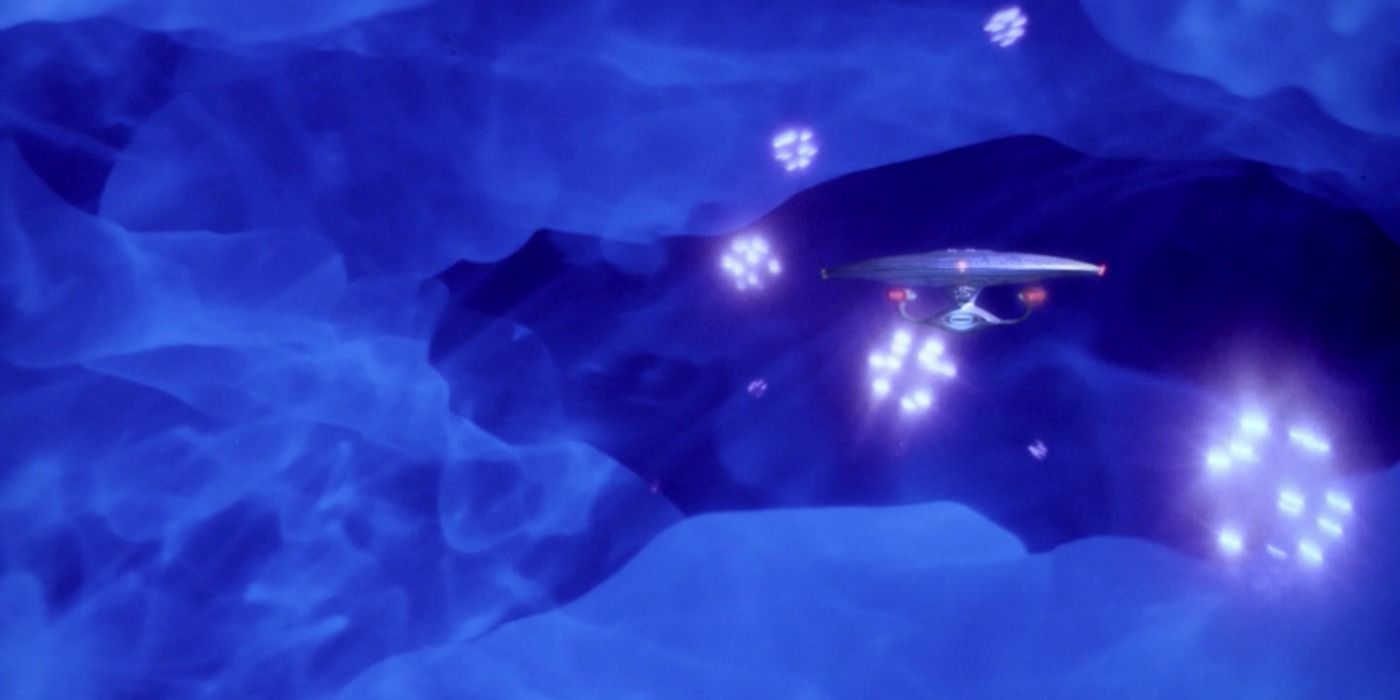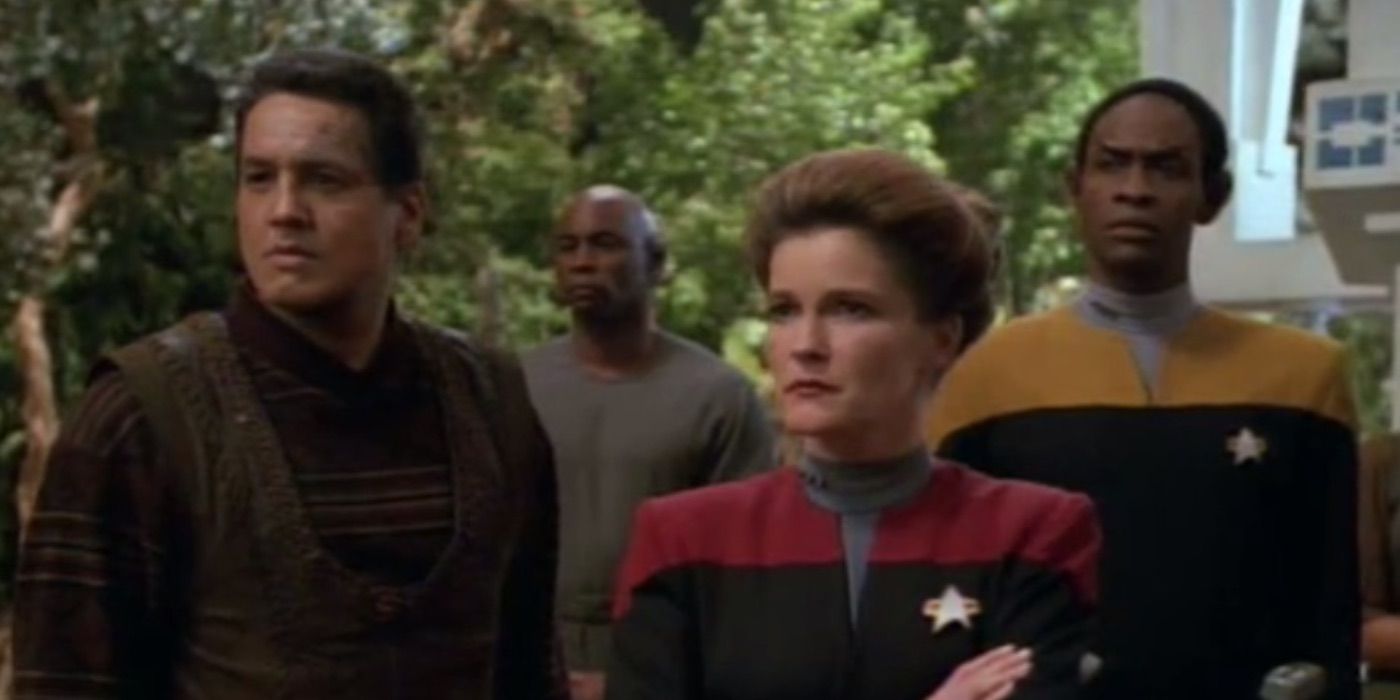One episode in Star Trek: The Next Generation season 1 had the same premise as Star Trek: Voyager—but much scarier. As the fourth live-action Star Trek show, Star Trek: Voyager kept the trailblazing spirit of Star Trek: The Original Series alive by being set in the Delta Quadrant. Captain Kathryn Janeway's (Kate Mulgrew) USS Voyager was flung 70,000 light-years to the far side of the galaxy by the Caretaker (Basil Langton), a dying sporocystian life form. After the Caretaker's death, Voyager's crew were stranded, with a journey ahead of them that would take 75 years at maximum warp.
Star Trek: The Next Generation season 1, episode 6, "Where No One Has Gone Before", sees Captain Jean-Luc Picard's (Patrick Stewart) Starship Enterprise sent past 2 different galaxies, landing in galaxy M-33—2,700,000 light years from home. This immense distance is covered after Kosinski (Stanley Kamel) and his assistant, known only as the Traveler (Eric Menyuk), make experimental modifications to the USS Enterprise-D's engines. Even at maximum warp, the Enterprise-D's return trip will take over 300 years. Kosinski isn't able to repeat this terrifying success because it was actually the Traveler who made it possible, and he's fallen ill.
Star Trek: The Next Generation Season 1 Did Voyager’s Premise, But Scarier
The World Beyond Galaxy M-33 Is Scarier Than The Delta Quadrant
Star Trek: The Next Generation's season 1 episode, "Where No One Has Gone Before", is a scarier version of Star Trek: Voyager's premise. The USS Enterprise-D is much further from home, facing a 300-year journey back that's much more frightening than the USS Voyager's estimated 75-year trip. At that rate, the Voyager crew could theoretically live to see Earth again, but the Enterprise-D would have to become a generational ship to make it back. Captain Picard's order to reverse course actually makes it even worse, landing the Enterprise-D a billion light-years from where they started.
Even scarier than the distance yawning between the Enterprise-D and home is the fact that Captain Picard's crew found themselves in a frightening alien space where thought and reality are one and the same. Fears and desires manifest, trapping the TNG crew in prisons of their own minds. Even thoughts that seem benign, like Captain Picard's mother appearing with tea, are dangerous, because the TNG crew can't control their thoughts. The USS Voyager crew was in an unfamiliar part of space, sure, but the Delta Quadrant still obeyed the rules of physics.
Interestingly, Star Trek: Picard season 2 revealed that Yvette Picard never lived to be the old age that Captain Picard saw in his TNG vision. This suggests that Jean-Luc's true desire was that his mother had lived a long, healthy life.









